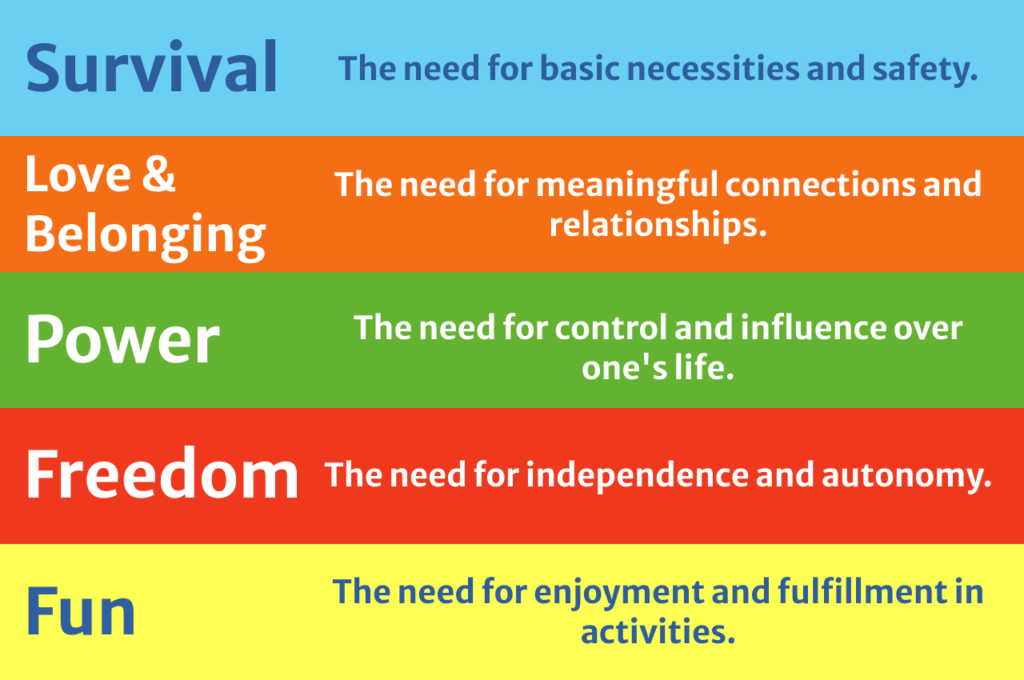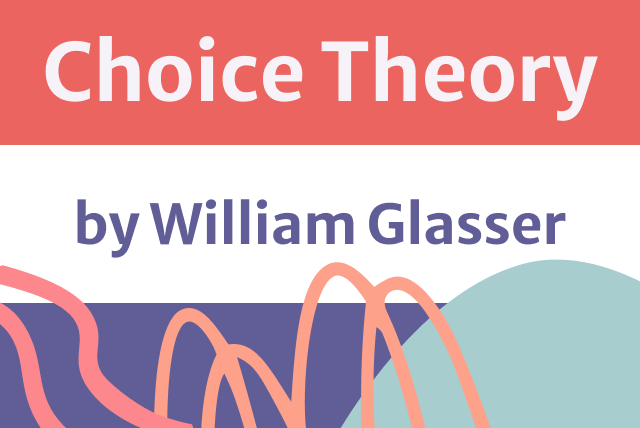Introduction
In the realm of education, empowering students with a sense of control over their learning journey is pivotal. One of the guiding principles that have significantly influenced modern educational practices is William Glassers’ Choice Theory. This theory asserts that individuals are driven by an innate need for control and choice in their lives. Translating this theory into the classroom setting, educators have found innovative ways to foster student independence and engagement. One of these methods is through the use of choice boards. This blog explores the fundamental concepts of William Glassers’ Choice Theory and delves into the significance of student choice in the classroom, emphasizing the effectiveness of choice boards as a valuable teaching tool.
Understanding William Glasser’s Choice Theory
At the core of William Glasser’s Choice Theory is the idea that human behavior is driven by five basic needs: survival, love and belonging, power, freedom, and fun. Glasser argues that individuals make choices in an attempt to satisfy these needs. In the context of education, acknowledging and addressing these needs can profoundly impact a student’s motivation, engagement, and overall learning experience.
- Survival: The need for basic necessities and safety.
- Love and Belonging: The need for meaningful connections and relationships.
- Power: The need for control and influence over one’s life.
- Freedom: The need for independence and autonomy.
- Fun: The need for enjoyment and fulfillment in activities.

Importance of Student Choice in the Classroom
- Enhanced Motivation: When students are given the opportunity to make choices in their learning, they become more motivated to actively participate. By aligning learning activities with their interests, students find a deeper sense of purpose, leading to increased enthusiasm for learning.
- Personalized Learning: Every student learns differently. Allowing them to choose activities that align with their learning style and pace promotes personalized learning experiences. This tailored approach enhances comprehension and retention, as students engage with content in ways that resonate with them.
- Improved Decision-Making Skills: Making choices, even within a structured environment like a classroom, helps students develop critical decision-making skills. They learn to assess options, consider consequences, and take ownership of their decisions, skills that are invaluable in real-life scenarios.
- Enhanced Responsibility and Accountability: When students have a say in their learning, they feel a greater sense of responsibility for their education. This accountability leads to increased effort and a proactive approach to learning, fostering a sense of ownership over their academic progress.
The Role of Choice Boards in Fostering Student Independence
Choice boards are powerful tools that facilitate student choice within a structured framework. A choice board is essentially a grid with various learning activities or assignments, each catering to different learning styles, interests, or skill levels. Students are given the freedom to choose activities from the board, providing them with a sense of control over their learning journey.
- Diverse Learning Activities: Choice boards offer a variety of activities, catering to different intelligences and preferences. Visual, auditory, kinesthetic, and tactile learners can all find activities that resonate with their strengths, ensuring a comprehensive learning experience for everyone.
- Encouraging Creativity and Critical Thinking: By selecting activities based on their interests, students are encouraged to think creatively. They might choose projects that allow them to express themselves artistically or engage in critical thinking tasks that challenge their problem-solving abilities.
- Promoting Collaboration: Some choice board activities can be designed to encourage collaboration among students. Group projects, discussions, or peer teaching activities foster a sense of community within the classroom, enhancing social skills and cooperative learning.
- Building Self-Efficacy: When students successfully complete tasks they have chosen, their confidence and self-efficacy are boosted. This positive reinforcement encourages them to take on more challenging tasks, further fostering a growth mindset and a love for learning.

Conclusion
Incorporating William Glassers’ Choice Theory into the classroom through the implementation of choice boards not only respects students’ fundamental needs for control and choice but also enhances their educational experience. By embracing student choice, educators create an environment where students are not just passive recipients of knowledge but active participants in their learning journey. This approach nurtures a lifelong love for learning, equipping students with the skills and mindset necessary for success in the ever-changing world beyond the classroom. As we continue to explore and implement innovative teaching methods, honoring the principles of Choice Theory and integrating choice boards into our pedagogical practices can pave the way for a brighter, more engaging future in education.


